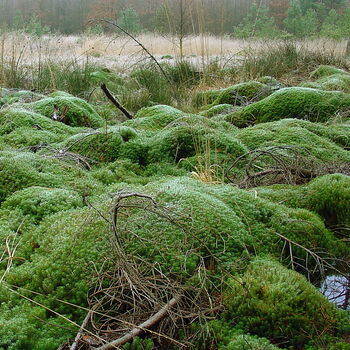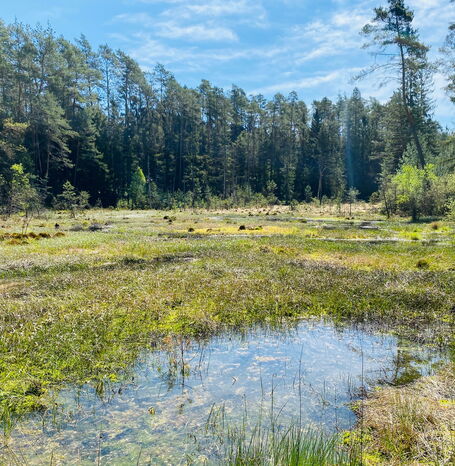
The bogs in the Burgwald are a special geographic-ecological feature. Due to low annual precipitation totals of only about 550 mm in the rain shadow of the Sauerland, and its nutrient-poor soils, pure raised bogs are rarely found, but mostly extremely nutrient-poor transitional bogs with an alternating proportion of raised and lowland bog species. Many boggy valley bottoms, on the other hand, are filled with pure fens.
The French meadows are the largest contiguous bog complex in the Burgwald. Their name is historically justified: In the 18th century, the wasteland was given to Huguenot settlers from Schwabendorf for use. The eastern part was thus drained and used as a hay meadow, while in the western part the bog was preserved. Of the 17 peat mosses found in the Burgwald, three are on the Red List of endangered plants. In addition, there are other floristic and faunistic peculiarities such as the bell heath (reaches its southeastern limit of distribution in the Burgwald) or the highly endangered Arctic emerald dragonfly.
The action group "Save the Burgwald" e.V. offers regular guided tours around the topics of the Burgwald and its moors.



